Enough Of The Excuses... Here Are Our Final Decisions On The
Best Birds Of The Year
OK... as is our habit, we'll do just a little more quibbling and
then FINALLY get to the meat of the matter...

Each year, we put our heads together, look over reader input,
our own reports and other sources of info and try to recognize the
VERY BEST aircraft in a number of pivotal categories. Each year,
the choices get tougher. Worse; we tend to also make it more
difficult by tightening the reins on the decision making process so
that it gets harder and harder to make the cut as the best in any
category, much less wind up at the top of the pack.
 As 2006 came to a close, we also
made some additional decisions as to what constitutes a "Best of
Breed" and how wide we wanted to cast the net. As previously noted,
it struck us that naming an overall "best" aircraft across the
entire spectrum of general (or sport) aviation is probably no
longer reasonable. There are simply too many aircraft that have
distinguished themselves in too many outstanding ways for one to
truly be called better than the other on an overall basis. One
man's perfect high-speed Hot-Rod, for instance, becomes the
expensive "way too hot to handle" mistake of another pilot whose
mission requirements may differ markedly. So... we're going to cop
out -- just a bit, mind you. From here on out, we will name the
best aircraft in individual categories, and reserve the right in
the future to whittle down those categories as necessary. But, the
fact of the matter is that no one airplane is all things to all
pilots, and within the spectrum that we have decided on, these are
the aircraft selections that truly impressed us in each of five
categories. Please also note that we envision the addition of new
categories for 1007, especially in regards to the burgeoning VLJ
and Personal Jet markets.
As 2006 came to a close, we also
made some additional decisions as to what constitutes a "Best of
Breed" and how wide we wanted to cast the net. As previously noted,
it struck us that naming an overall "best" aircraft across the
entire spectrum of general (or sport) aviation is probably no
longer reasonable. There are simply too many aircraft that have
distinguished themselves in too many outstanding ways for one to
truly be called better than the other on an overall basis. One
man's perfect high-speed Hot-Rod, for instance, becomes the
expensive "way too hot to handle" mistake of another pilot whose
mission requirements may differ markedly. So... we're going to cop
out -- just a bit, mind you. From here on out, we will name the
best aircraft in individual categories, and reserve the right in
the future to whittle down those categories as necessary. But, the
fact of the matter is that no one airplane is all things to all
pilots, and within the spectrum that we have decided on, these are
the aircraft selections that truly impressed us in each of five
categories. Please also note that we envision the addition of new
categories for 1007, especially in regards to the burgeoning VLJ
and Personal Jet markets.
Let me also note that while aircraft that previously were named
Best Of Breed in any category, or overall, are eligible for
inclusion in this year's list, we have decided to make it more
difficult (in our judging protocols) for a previous winner to take
the top spot in our judging criteria, so that a repeat winner truly
earns the distinction.
So... here we go, let's review our final
selections for the category of 'GA Piston Twin' and
then we'll tell you who won top honors... and
why.
Diamond Aircraft DA42
The GA world hasn't seen a REALLY new-piston twin in many
moons... much less one based on as clean a sheet of paper as that
which produced the doubly-daring Diamond DA42. When you look at the
entire GA fleet, no airframe represents as much real progress in
every aspect of aviation technology (airframe, powerplant and
avionics) as does the Diamond DA42.
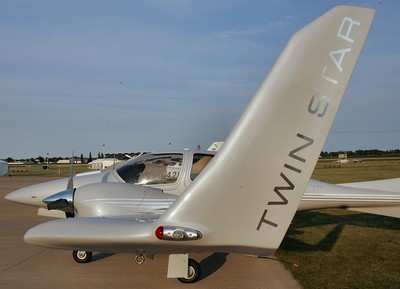
Offered by a highly capable company with an uncanny knack for
coming up with solid products, Diamond Aircraft; the DA42 remains
the single most innovative aircraft currently offered to GA... bar
none (at least until the DJet gets into production). It's not just
a lovely composite apparition with a full-fledged glass panel and
known ice-capability. Nope... this bird also burns (far less
expensive) JET A! Via FADEC-controlled turbo-diesel engines that
were actually designed within the last decade (versus those other
piston engines whose designs date back the better part of a
century), the aircraft offers phenomenal versatility and
unparalleled efficiency. All this, for a price that is equivalent
to any one of several competitive single-engine airplanes...
Amazing. Just plain amazing.
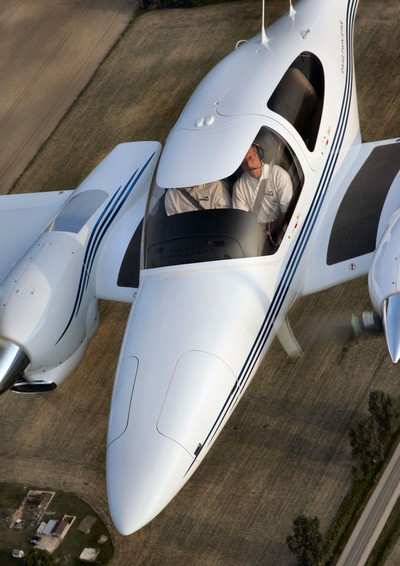
The DA42 is powered by two 135 HP Thielert diesel engines,
cruises 172 knots (while sipping 12.5 GPH), boasts a S/E service
ceiling of a whopping 18,000 feet (quite a bit for a piston twin),
and a useful load of 1174 pounds. Takeoff requirements are 1730
feet over a 50' obstacle, and landings over the same 50 footer is
1877 feet. And yes, let me repeat, it burns jet fuel. TKS
Deicing and known ice certification is available as an
option.
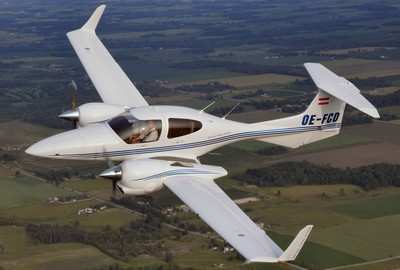
Our flights in the bird have been revealing. The bird handles
exceptionally well, the single-engine properties are not remotely
difficult, and as soon as the known-icing package comes fully
available, this is going to be the airplane to beat for folks who
not only have to get around, but need to do so dependably.
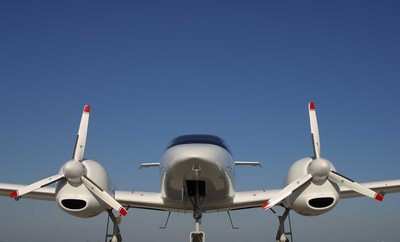
Finally; the greatest benefit this $478,638 aircraft brings to
the mix is the company that backs it up... easily one of the best
in the business and one that seems committed to even greater
efforts in the coming year. We have great faith in the
dependability of this company and recommend it without reservation.
No doubt about it, the DA42 qualifies, again, as one of our "Best
of Breed" selections.
Piper Seminole
An oldie but a goodie, the $484,900 Piper Seminole has seen some
exciting updates to its panel and added a host of extensive
options. You see them everywhere... in the hands of private owners,
beating the air senseless for countless flight schools and
aero-colleges, and even in airline livery for a number of carriers
looking for keep their pilots up to snuff. The Piper Seminole has
become the Piper Apache (possible the best piston twin trainer when
it was in fashion) for the new century.
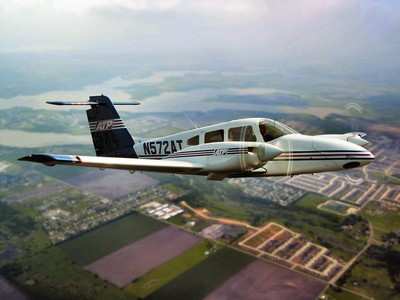
The Seminole hauls four people around between two 180 hp
Lycoming IO-360 engines, and at speeds up to 168 knots. The
bird has a 15,000 foot service ceiling, a range of 770 nautical
miles and a hefty useful load of 1197 lbs. The T-Tailed tricycle
retractable now sports the ability to host a full Avidyne PFD and
MFD equipped panel and all the accessories that go with it...
C-Max, E-Max, Multilink, Stormscope, Skywatch... you name it. We're
talking SERIOUS panel toys, folks.
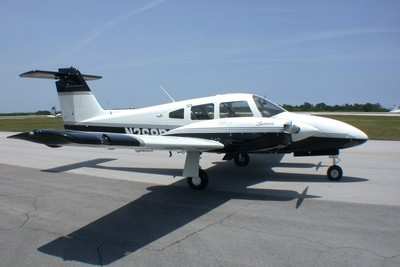
The Seminole stalls at 55 KIAS (Vso), has no effective Vmc, a
S/E service ceiling of 3800 feet, and when jumping the
stereotypical 50 foot obstacle, needs 2200 feet for takeoff and
1490 feet for landing.
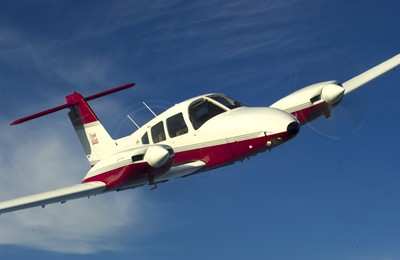
The manners of this aircraft can not be underplayed. Years ago,
I got talked into a legal but somewhat inadvisable (OK, stupid) IFR
takeoff out of Fresno, California, during the height of the Tule
fog season. It was a great trip until the high-time right engine
decided to have a panic attack -- at all of 200 feet -- and with
several hundred feet left before I was able to get out of the scud.
My idiocy almost got me killed... but the very good manners of the
Seminole allowed me to control a dumb situation and manage the
climb to VFR conditions, settle the airplane down, and work my way
down to a VFR airport whereupon I had a come-to-Jesus with the
"facilities."
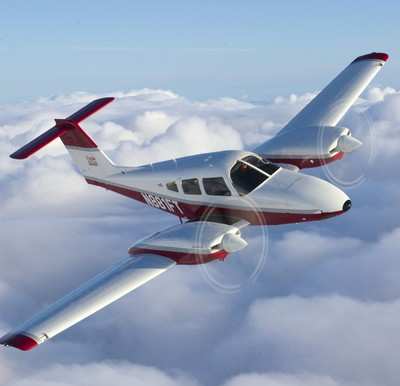
Light twins, by and large, can't offer the kind of
performance that their turbine cousins can, but good manners in
asymmetric power configurations are a prerequisite for survival...
and the good manners of the Seminole have my undying (in more ways
than one) respect. This is a great airplane with solid backing from
an aviation legend, Piper Aircraft.
Raytheon Baron G58
Boasting an aero-pedigree that spans decades, Raytheon's G58
Baron has withstood the test of time awfully well... especially
once it got a new panel and the magic associated with Garmin's
highly accomplished G1000 EFIS and GFC700 autopilot. The Baron line
is a nearly legendary series of light twins... and possibly the
best airframe Raytheon/Beech ever built -- especially when you
concentrate on the the -58 series.

The new G58 series Baron does 202 knots and works itself up to
its service ceiling of 20,688 feet at 1700 fpm. The S/E service
ceiling is 7284 feet. With a 1592 SM range (at 10K, 21/21), the 6
place Baron is a heavy hauler boasting a 1544 pound useful load,
when lofted by two TCM IO-550C powerplants pushing 300 HP a piece.
And leave us not mention the charms of that wonderful double back
door that gives such easy access to the passenger cabin for four of
your best buddies... it offers the nicest passenger entry in the
twin game, bar none.
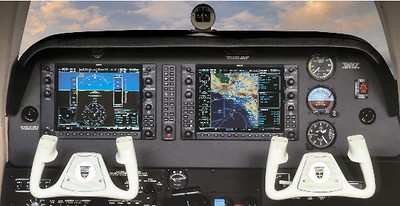
Baron handling is about as good as it gets, especially when the
workload gets heavy. The well-muscled Baron handles tough
crosswinds and lousy weather well due to a fairly hefty wing
loading of 27.6 lbs/sq.ft and rudder that does nto know the meaning
of "quit." And thankfully, the Baron is a light twin that actually
has some guts when faced with an engine out -- including a S/E
service ceiling that won't (for a change) keep you in the
weeds).
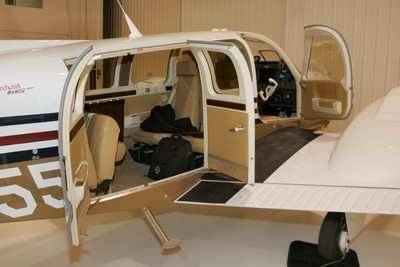
The workmanship is, of course, Raytheon's calling card with each
bird pretty much hand-built due to the limited numbers being
brought forth from the holy land of Wichita, and if you check the
bird out, you will see one of the best crafted twins in the GA
world. Unfortunately, though, that quality comes at a price. A
loaded G58 will go out the door at over 1.2 million dollars...
which, as good as the bird is, seems pretty high when compared to
its competition... all across the board.
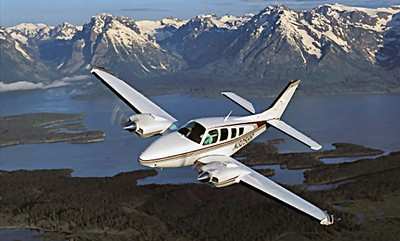
That's a shame, because the G1000/GFC700 equipped G58 is about
as close to a small personal airliner as the piston world
produces... but at over twice the price of the average competition,
all that capability and quality comes at a lofty price. Still... if
price is no object, the G58 is one sweet ride.
OK... No More Stalling, The Winner Is...
The Fourth of our Five categorical choices (covering GA
Piston Single, GA Piston Twin, SA Experimental Kit, E-LSA Kit, and
S-LSA Ready To Fly) for the "Best of Breed" of 2006... a heckuva
good year for aviation, is...
The Diamond DA42
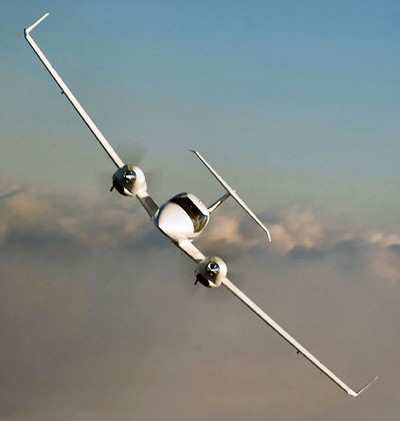
One would think that the main reason we'd pick a
bird like the DA42 would lie in its use of an all-glass panel, new
generation composite structures and the first legitmate foray into
truly modern powerplant alternatives... but that isn't
quite it. The main reason we selected this airplane,
above and beyond all the high-tech goodies, is the fact that they
made it all work -- and the accompanying fact that Diamond is
compiling one of the best records for reliability and customer
serice in the business.

While the company may not get all the
attention that a Cessna. Piper or Cirrus may get in the
media (yet), this is a company and an airplane that MUST be
reckoned with... they've made agggressive, even risky decisions,
that are not only paying off, but they show no signs of slowing
down with some of the most inspired (some competitors may
infer it to be reckless, but we disagree) decision making in the
last GA decade.
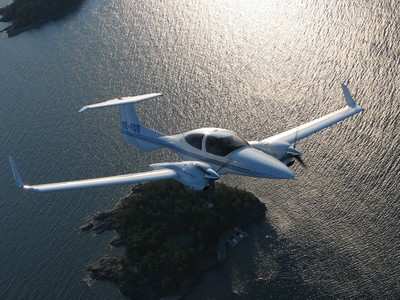
Like all such birds, this airplane is not without
its teething problems and shortcomings, but for such a
revolutionary airplane to come off so well and to integrate so
quickly into the North American GA landscape, we can't help but be
impressed -- and to look forward to what comes next.
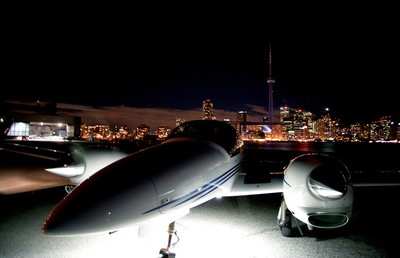
Diamond's DA42 is a world-class airplane, a solid
performer and a the only true choice for ANN's 2006 Plane of The
Year-GA Piston Twin. ANN extends our Congrats to Diamond for a
magnificent effort and for producing an aggressively innovative,
yet solid, product.
 ANN's Daily Aero-Linx (05.06.25)
ANN's Daily Aero-Linx (05.06.25) ANN's Daily Aero-Term (05.06.25): Ultrahigh Frequency (UHF)
ANN's Daily Aero-Term (05.06.25): Ultrahigh Frequency (UHF) ANN FAQ: Q&A 101
ANN FAQ: Q&A 101 Classic Aero-TV: Virtual Reality Painting--PPG Leverages Technology for Training
Classic Aero-TV: Virtual Reality Painting--PPG Leverages Technology for Training Airborne 05.02.25: Joby Crewed Milestone, Diamond Club, Canadian Pilot Insurance
Airborne 05.02.25: Joby Crewed Milestone, Diamond Club, Canadian Pilot Insurance




















